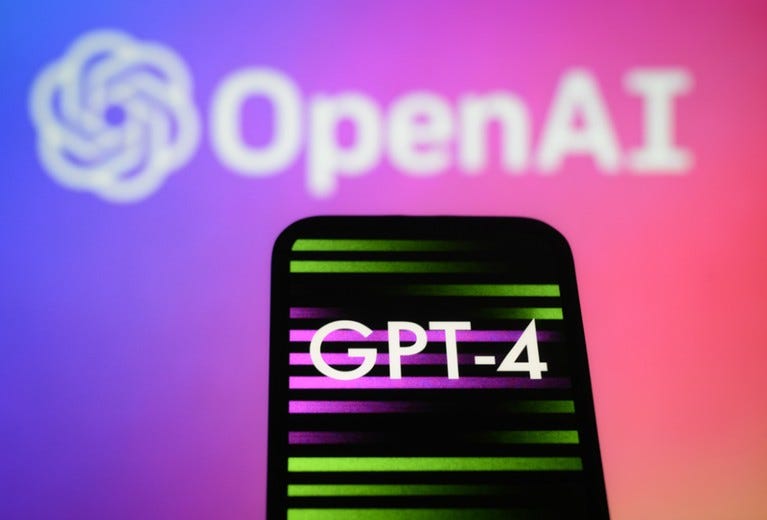
Introduction
The realm of artificial intelligence (AI) continues to be revolutionized with the advent of new technologies and models, pushing the boundaries of what’s possible. Among these groundbreaking developments, the unveiling of GPT-4 by OpenAI stands as a significant milestone in the world of generative AI. This article delves into the intricacies of GPT-4, its profound potential, and its subsequent impact on tech giants like Google and Microsoft.
The Evolution of GPT: From GPT-1 to GPT-4
To truly appreciate the significance of GPT-4, it’s essential to understand the lineage of the Generative Pretrained Transformers (GPT) family. Starting with GPT-1, OpenAI introduced a model that leveraged the power of transformers, a novel type of neural network architecture, to generate coherent and contextually relevant text.
Progressing to GPT-2, OpenAI significantly increased the model’s size, leading to more accurate text generation. However, due to concerns about misuse, they initially refrained from releasing the full model, indicating the growing power of this technology.
GPT-3 marked a quantum leap forward, boasting a whopping 175 billion parameters. This language model could generate impressively human-like text and even perform tasks without specific training, such as translation, question-answering, and rudimentary reasoning. Yet, even with all its advancements, GPT-3 had limitations in understanding context, maintaining coherence over a long text, and it occasionally produced incorrect or nonsensical outputs.
With the unveiling of GPT-4, OpenAI has taken another giant stride, aiming to address the limitations of its predecessor and presenting an even more advanced, accurate, and contextually aware language model.
The Game-Changing Potential of GPT-4
While the specifics of GPT-4’s architecture and capabilities remain proprietary knowledge of OpenAI, the expectations within the AI community are enormous. GPT-4 is anticipated to exhibit even better comprehension of complex, contextual information and offer improved coherence over longer pieces of text.
The model’s text generation is expected to be more accurate, reducing instances of producing incorrect or nonsensical information. There are also predictions about GPT-4 having a better grasp of common sense reasoning, something that earlier models sometimes struggled with.
The practical applications of these improvements are vast and diverse, ranging from AI chatbots that provide more accurate responses, to advanced content generation, automated customer service, more intuitive virtual assistants, and even potential use-cases in data analysis, programming, and scientific research.
GPT-4’s Impact on Google and Microsoft
Given the transformative potential of GPT-4, its introduction carries significant implications for tech giants like Google and Microsoft, who are also actively involved in the AI space.
For Google, a company with an extensive suite of AI-powered services and products, GPT-4 could potentially enhance many of its offerings. Imagine Google Search or Google Assistant becoming even more accurate and contextually aware, providing better results and more natural interactions. Similarly, GPT-4 could contribute to improving Google’s machine translation and natural language processing tools, boosting the overall user experience.
Microsoft’s implications are equally significant. Having recently licensed exclusive use of GPT-3, Microsoft’s endorsement of GPT technologies is clear. GPT-4 could further empower Microsoft’s AI initiatives, enhancing its products like Cortana and various services in the Azure ecosystem. Moreover, Microsoft’s recent acquisition of Nuance Communications, a leading provider of AI and speech recognition services, highlights their increasing focus on advanced conversational AI, where GPT-4 could play a pivotal role.
Conclusion
The unveiling of GPT-4 marks another substantial step forward in the world of generative AI. Its potential to augment a myriad of applications and services across industries is tremendous. For tech giants like Google and Microsoft, GPT-4 could significantly boost their AI capabilities, enhancing their products and services, and creating more value for their users.
As we continue to witness rapid advancements in AI technology, it’s clear that models like GPT-4 are not merely tools for automation but are becoming strategic assets in today’s digital economy. However, as these powerful AI models become more pervasive, we must also ensure responsible usage and effective governance to maximize their benefits while mitigating potential risks. As such, the journey of GPT-4 will be as much about the technological advancements as it will be about the ethical, societal, and policy conversations that it spurs.
Find more … …
Unlocking the Potential of AI: A Comprehensive Exploration of Prompt Tuning
Harnessing the Power of AI: The Transformational Journey of RELX
The AI Evolution in Social Media: Koo’s Integration of OpenAI’s ChatGPT